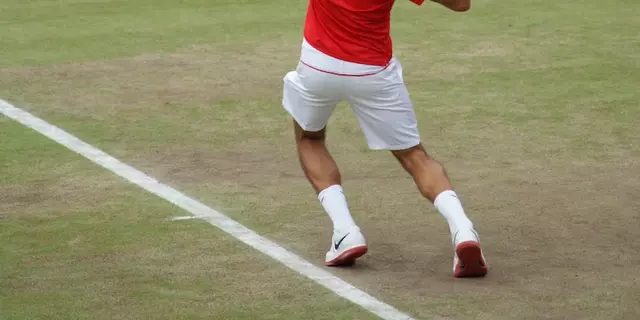The Mechanics of the Tennis Serve Receive
As a tennis enthusiast and blogger, one of the things I have come to appreciate about the game is the complexity and athleticism it requires. With every serve and return, players demonstrate a blend of precise timing, agility, and strategic thinking. But why do they bend when receiving serves? It's all about mechanics. Bending the knees allows the player to quickly adjust their body position in response to the incoming serve. This is crucial as the serve is usually the fastest shot in a tennis match, reaching speeds of over 100 mph in professional games.
The Importance of Anticipation
Another reason why players bend during a serve receive is anticipation. Tennis is a game of lightning-fast reactions, and every fraction of a second matters. By bending their knees, players are essentially priming their bodies to spring into action. It's like revving a car engine before a race; the player is getting ready to explode into movement the moment the ball is hit. This allows them to react faster to the serve and get into the optimal position for a return.
Enhanced Ball Control
Control is another key aspect of tennis, and bending the knees can help improve it. By lowering their center of gravity, players gain better balance which aids in hitting the ball more accurately. It also allows for a wider range of motion, enabling players to hit lower balls effectively. Whether they are aiming for a powerful return or a delicate drop shot, bending helps them execute their shots with precision.
Power Generation
The bending motion is also a crucial part of generating power in the return. When a player bends their knees, they can push off the ground more forcefully. This action engages the powerful leg muscles, adding extra speed and power to the return shot. It's not just about reacting to the serve; it's about responding with a strong, aggressive return.
Reducing Injury Risk
Tennis can be a physically demanding sport, with players often making abrupt starts, stops, and changes of direction. Bending the knees when receiving a serve helps to absorb the impact, reducing the stress on the joints and decreasing the risk of injury. This is especially important in professional tennis, where players often have grueling match schedules.
Prolonging Career Longevity
By reducing the risk of injury, bending the knees can also contribute to career longevity. Many professional tennis players are able to compete well into their thirties, an age considered old in many other sports. By taking care of their bodies and employing techniques like bending during serve receives, these athletes are able to extend their playing careers.
The Role of Fitness
Of course, being able to maintain the bending position throughout a match requires a certain level of fitness. Lower body strength and endurance are particularly important. This is why tennis players spend a significant amount of time off the court working on their conditioning. Whether it's through weight lifting, plyometrics, or endurance training, these athletes are constantly working to improve their fitness levels.
Practicing the Bend
Like any other technique in tennis, bending during a serve receive requires practice. Players must learn how to time their bending motion correctly, how to balance while in this position, and how to quickly transition into the next shot. This takes countless hours of drilling and repetition, but the payoff can be significant.
Conclusion: The Art and Science of Tennis
Ultimately, bending during a serve receive is just one of many techniques that make tennis such a fascinating sport. It's a perfect blend of art and science, requiring both physical prowess and tactical acumen. So the next time you watch a tennis match, take a moment to appreciate the skill and strategy behind every serve and return. And if you're a player yourself, remember to bend those knees!





